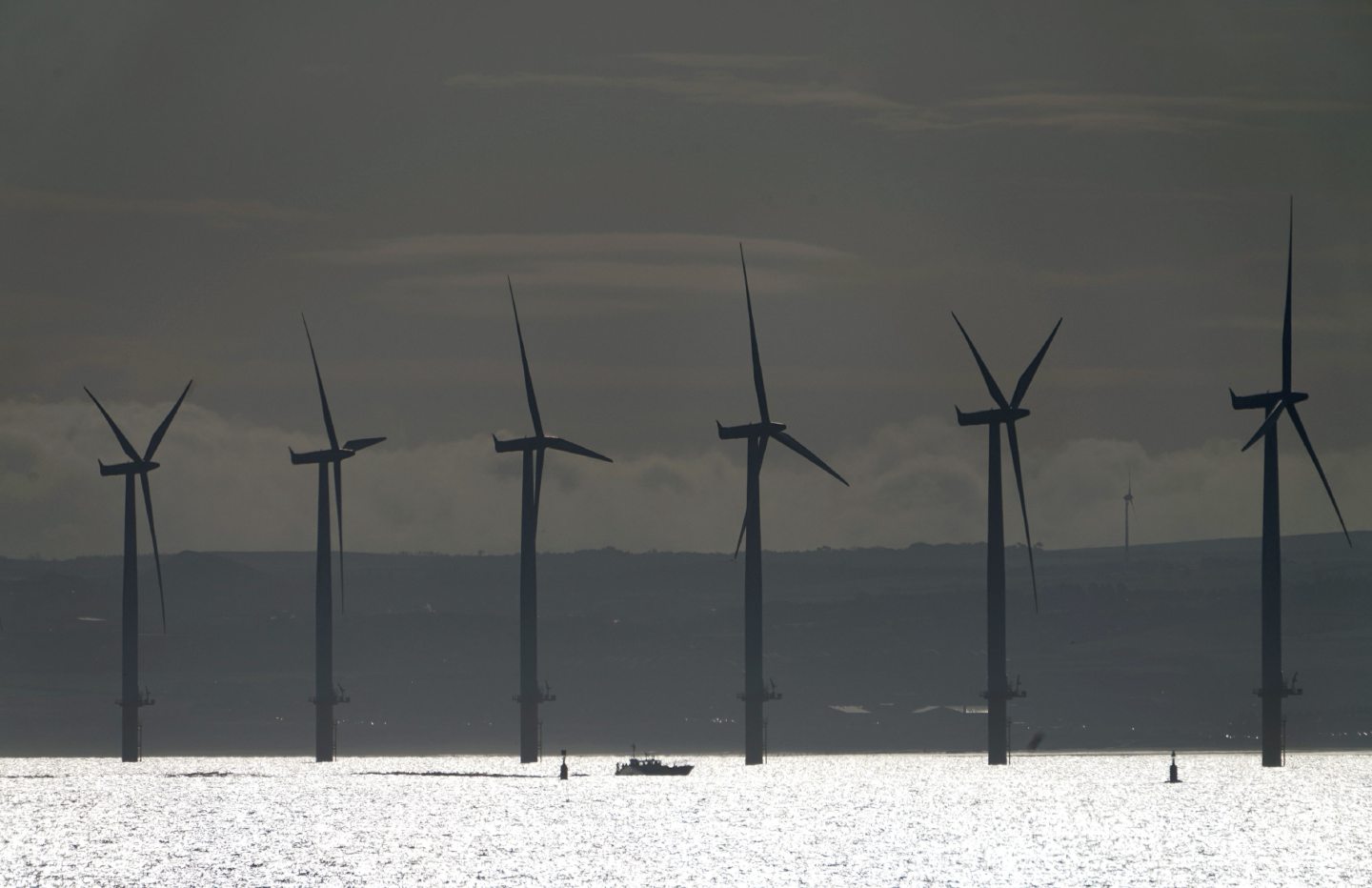
That all low carbon energy roads lead to Glasgow for COP26 in November would seem a fair supposition.
However, energy is a world where it is mostly money that talks.
The system favours the haves, and not the billions of people around the world for whom being able to cook a meal is a struggle and climate change is very real threat.
As far as can be ascertained, there is no such thing as a global low carbon energy coalition, nor will there ever be.
But that shouldn’t come as a surprise, because no such thing exists in the world of Big Oil.
Organisationally, there’s Opec plus a rag-bag of everybody else. It is an industry where tensions abound and where internecine conflicts are commonplace. It is national oil corporations (NOCs) that command the large majority of resources, not western super-majors.
Low carbon is a lot more diverse — mostly wind, solar, hydropower, maritime and bio-energy.
But there really is no such thing as a global low carbon energy coalition.
However, in March, the Global Wind Energy Council (GWEC), a trade association, launched the potentially very powerful Global Wind Energy Coalition for COP26.
It is described as a multi-stakeholder group of leading wind power companies and associations committed to ramping up wind-based generation capacity to limit the dangerous impacts of climate change.
To confuse the picture, five months prior to the GWEC initiative being launched, the Coalition for Offshore Energy and Nature was ushered in under the so-called Renewables Grid Initiative.
This coalition brings together NGOs, wind industry and transmission system operators across Europe to cooperate on the sustainable deployment of offshore wind, while ensuring alignment with nature protection and healthy marine ecosystems.
Only Orsted and Siemens Gamesa are common to both coalitions, at least at the point of formation. The two groupings could hardly be different.
Last month, GWEC said there was a need for countries around the globe to urgently scale up deployment of wind power in order to address the climate emergency.
It launched Global Wind Day, pointing out: “The world is in a ‘make or break’ decade for climate action, and it is against this backdrop that the wind sector is intensifying its call for urgent climate action leading up to COP26 in November.
“Holding the most decarbonisation potential of any renewable energy source, wind power is an indispensable part of the solution to climate change while generating significant socioeconomic benefits.
“But the world is not installing wind power at the pace needed to achieve net zero, and much more needs to be done to unleash its potential.”
GWEC CEO and former journalist Ben Backwell said: “We need to move from talking to action, and work together to massively scale up wind power around the world if we want to get to net zero by 2050.
“We need to be installing wind energy at three to four times the current pace, which means we need governments to urgently raise their ambition, simplify red tape, invest in grid and revamp energy markets.”

What is striking about the GWEC coalition is that it comes across as very Big Wind. It is an industry that waves its green credentials at every possible opportunity though scandals such as dumping redundant turbine blades in landfill tell a different story.
The apparent lack of small-scale community wind representation is an issue that comes through strongly in the SDG7 Energy Progress Report released last month by the International Energy Agency (IEA), the International Renewable Energy Agency (IRENA), the UN Department of Economic and Social Affairs, the World Bank, and the World Health Organisation (WHO).
The report aims to provide the international community with a global dashboard to register progress on energy access, energy efficiency, renewable energy and international cooperation to advance SDG 7.
It assesses the progress made by each country on these four pillars and provides a snapshot of how far we are from achieving the 2030 Sustainable Development Goals (SDG) targets.
It paints an energy mural of dramatic contrasts, especially and sadly, the worsening energy situation for the peoples of Sub-Saharan Africa.
WHO’s observations on the situation in Africa are excoriating.
It warns: “Close to three billion people have no access to clean cooking solutions, mainly in Asia and Sub-Saharan Africa.
“Without urgent attention to this issue, only 72% of the global population will have access to clean cooking fuels and technologies by 2030.
“Exposure to household air pollution will continue to contribute to millions of deaths from diseases, pneumonia and Covid-19.
“During the last decade, a greater share of the global population gained access to electricity than ever before, but the number of people without electricity in Sub-Saharan Africa actually increased.
“Unless efforts are scaled up significantly in countries with the largest deficits, the world will still fall short of ensuring universal access to affordable, reliable, sustainable, and modern energy by 2030.”
If there is a part of the global energy diaspora that merits attention more than any other, then it is surely this.
Moreover, so much of the solution is based around low cost, low carbon and proven, namely solar panels and small wind turbines. Both have been around for 50 years and more.
In uber-sharp contrast, and from the perspective of the World Economic Forum (WEF), we turn to North Sea wind, in part because of the promise it holds for diversification of the offshore oil and gas supply chain.
In a note on offshore wind issued last month, WEF picked up on the IEA’s recent call for a dramatic increase in offshore wind capacity as a key part of the energy transition now gripping humankind.
To remind, the IEA stated that offshore wind should be installed at a rate of 80GW per year by 2030. Today the total installed capacity of offshore wind is 30GW.
That means, nine years from now, we should be installing nearly three times today’s worldwide offshore wind capacity every year.
Arguably, the offshore wind industry finally came of age last year. This is largely thanks to the reduction of the levelised cost of energy, which means offshore wind farms in Europe are competitive with other energy sources.
While this is true, the WEF warns that the industry cannot be complacent. The need for innovation, and for technology pioneers, has never been greater.
To date the industry has focused primarily on developing the low hanging fruit.
That means offshore sites, almost exclusively located in the North Sea, that are relatively easy to develop, with shallow waters, good soil and fairly reasonable weather conditions.
It is here, where the retail price of energy is high, that technical advancements, economies of scale and efficiencies have seen the cost of development fall.
The North Sea is where all of the world’s 6.6GW of new offshore wind was installed in 2020. However, the IEA’s Net Zero by 2050 report asks governments and the industry to take this global.
WEF said: “If the industry is going to build 12 times more capacity per year than it is developing today, we are going to have to venture into deeper, more challenging waters across the globe.
“Doing this will require a focus on more advanced and more expensive fixed and floating foundations to withstand the typhoons, seismic activity and deepwater conditions that prevail around the world.”
WEF has clocked that the IEA estimates 50% of the technology needed for net zero is not yet deployed. However, the offshore wind industry has grown complacent with growth, and the barriers to innovation have apparently never been higher.
“We need bolder, more nimble investors and technology pioneers to drive the innovation needed and focus on innovations that can bring speed to the industry and be applied at a global scale,” says WEF.
IP in offshore wind is a sensitive topic, with each of the big three turbine manufacturers involved in at least one mutual IP legal dispute in the last 18 months.
Innovation will require investment, which should be protected, however, this should not disrupt the development of game-changing technologies for the energy transition.
The foregoing doesn’t even begin to scratch the surface of the opportunities and challenges that confront low carbon energy in the years to come.
Of course low carbon will get a hearing in Glasgow, but which parts will depend on the power to influence.
And that generally involves considerable wealth, the kind of world that is totally alien to the three billion who struggle to put warm food on their table.
Their energy road most certainly will not be leading to Glasgow, rather it will be a trudge out onto a semi-arid landscape, questing for sticks and dung with which to cook the millet, or maize or rice or gruel and somehow survive.
That is their energy reality and it’s a solar system away from COP, any COP.
